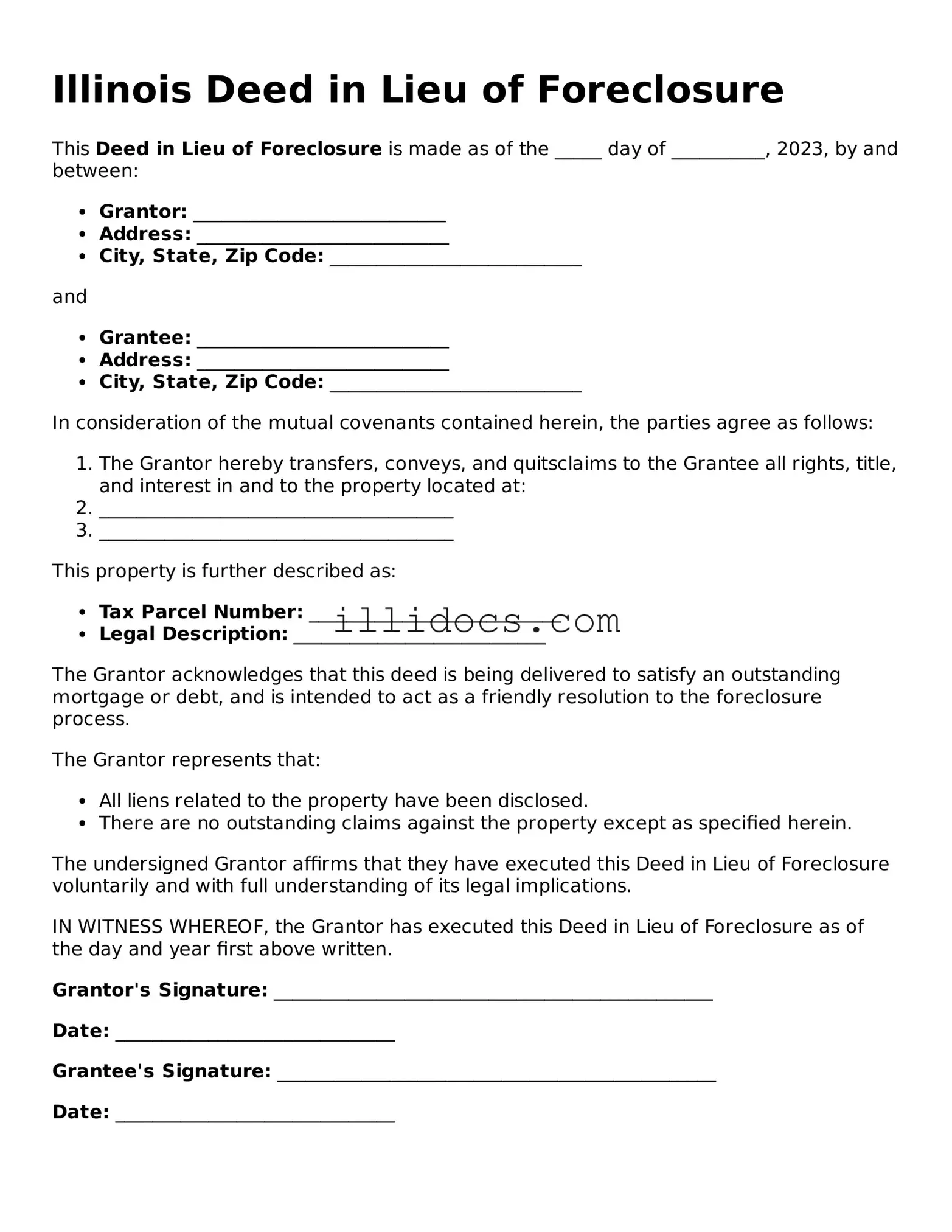What is a Deed in Lieu of Foreclosure?
A Deed in Lieu of Foreclosure is a legal process where a homeowner voluntarily transfers the title of their property to the lender to avoid foreclosure. This option is often pursued when a homeowner can no longer afford their mortgage payments and wishes to settle their debt without going through a lengthy foreclosure process.
Who is eligible for a Deed in Lieu of Foreclosure in Illinois?
Eligibility typically depends on the specific circumstances of the homeowner. Generally, homeowners facing financial hardship, such as job loss, medical expenses, or divorce, may qualify. The lender will also consider whether the homeowner has attempted other alternatives, such as loan modification or short sale, before approving a Deed in Lieu.
What are the benefits of a Deed in Lieu of Foreclosure?
One of the main benefits is that it allows homeowners to avoid the negative impact of a foreclosure on their credit score. It can also expedite the process of relinquishing the property and may relieve the homeowner from further financial obligations related to the mortgage. Additionally, lenders may offer relocation assistance or other incentives to encourage homeowners to pursue this option.
What are the drawbacks of a Deed in Lieu of Foreclosure?
While there are benefits, there are also potential drawbacks. A Deed in Lieu may still affect your credit score, although typically less severely than a foreclosure. Furthermore, if the property has a higher value than the mortgage, the lender may seek a deficiency judgment for the difference. Homeowners should fully understand their financial situation before proceeding.
How do I initiate a Deed in Lieu of Foreclosure?
The process begins by contacting your lender to express your interest in pursuing a Deed in Lieu. The lender will review your financial situation and may require documentation, such as proof of income and hardship. If approved, the lender will provide the necessary forms and instructions to complete the transfer of the property.
What documents are needed for a Deed in Lieu of Foreclosure?
Homeowners will typically need to provide identification, proof of income, a hardship letter explaining their situation, and any relevant financial documents. The lender may also require the original mortgage documents and a title report to ensure there are no liens on the property.
Can I still live in my home during the Deed in Lieu process?
Generally, once the Deed in Lieu is executed, you will need to vacate the property. However, some lenders may allow a grace period for you to remain in the home while arrangements are made for relocation. It is essential to discuss this with your lender during the process.
Will I receive any financial assistance after a Deed in Lieu?
Some lenders may offer financial assistance, such as relocation assistance, to help you transition to a new living situation. This assistance varies by lender and should be discussed during the negotiation process. It is important to ask about any available options that may ease your move.
How does a Deed in Lieu of Foreclosure affect my credit score?
A Deed in Lieu of Foreclosure will impact your credit score, but usually less severely than a foreclosure. The exact effect can vary based on your overall credit history and the scoring model used. It is advisable to monitor your credit report and take steps to rebuild your credit after the process is complete.
Can I reverse a Deed in Lieu of Foreclosure once it is completed?
Once the Deed in Lieu of Foreclosure is finalized and the property title has been transferred to the lender, it cannot be reversed. Homeowners should carefully consider this option and seek legal advice if necessary before proceeding with the transfer.
